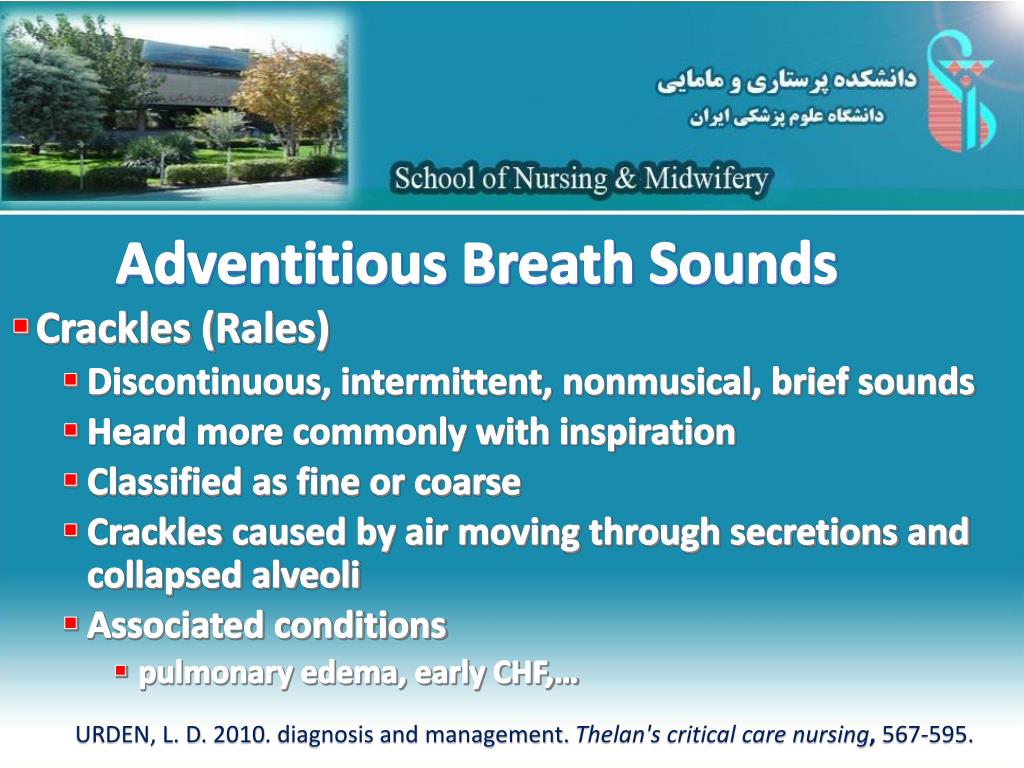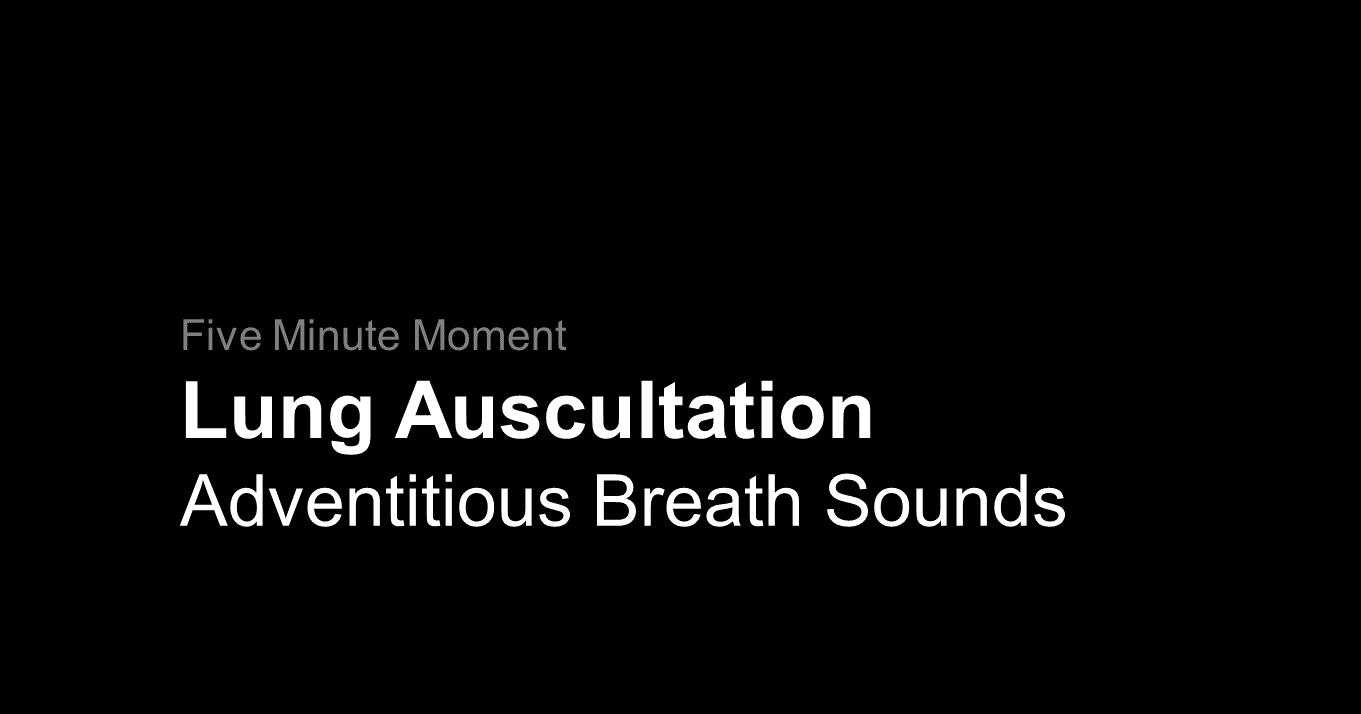

) are soft, high pitched, and very brief (5-10 msec). 241).ĭISCONTINUOUS SOUNDS (CRACKLES OR RALES) are intermittent, nonmusical, and brief-like dots in timeįine crackles (-.-Coarse crackles ( » w * brief (20-30 msec). The most common kinds of these sounds are described below:įor further discussion and other added sounds, see Table 6-6, Adventitious (Added) Lung Sounds: Causes and Qualities (p. Detection of adventitious sounds-crackles (sometimes called rales), wheezes, and rhonchi- is an important part of your examination, often leading to diagnosis of cardiac and pulmonary conditions. Listen for any added, or adventitious, sounds that are superimposed on the usual breath sounds. Are vesicular breath sounds distributed normally over the chest wall? Or are there bronchovesicular or bronchial breath sounds in unexpected places? If so, where are they?Īdventitious (Added) Sounds. Listen for the pitch, intensity, and duration of the expiratory and inspiratory sounds. Is there a silent gap between the inspiratory and expiratory sounds? A gap suggests bronchial breath sounds. When patients do not breathe deeply enough or when they have a thick chest wall, as in obesity, breath sounds may remain diminished.īreath sounds may be decreased when air flow is decreased (as by obstructive lung disease or muscular weakness) or when the transmission of sound is poor (as in pleural effusion, pneumothorax, or emphysema).

If the breath sounds seem faint, ask the patient to breathe more deeply. Breath sounds are usually louder in the lower posterior lung fields and may also vary from area to area. Be alert for patient discomfort due to hyperventilation (e.g., light headedness, faintness), and allow the patient to rest as needed.
#5 adventitious breath sounds full#
Listen to at least one full breath in each location. If you hear or suspect abnormal sounds, auscultate adjacent areas so that you can fully describe the extent of any abnormality. Use the pattern suggested for percussion, moving from one side to the other and comparing symmetric areas of the lungs. Listen to the breath sounds with the diaphragm of a stethoscope after instructing the patient to breathe deeply through an open mouth. * The thickness of the bars indicates intensity the steeper their incline, the higher the pitch. See Table 6-5, Normal and Altered Breath and Voice Sounds (p. If bronchovesicular or bronchial breath sounds are heard in locations distant from those listed, suspect that air-filled lung has been replaced by fluid-filled or solid lung tissue. Over the manu-brium, if heard at all Over the trachea in the neck Often in the 1st and 2nd interspaces anteriorly and between the scapulae Inspiratory and expiratory sounds are about equal.Įxpiratory sounds last longer than inspiratory ones. Vesicular* Inspiratory sounds Soft ^f- last longer than Also shown are the tracheal breath sounds-very loud, harsh sounds that are heard by listening over the trachea in the neck. The characteristics of these three kinds of breath sounds are summarized in the table below.

Expiratory sounds last longer than inspiratory sounds. ■ Bronchial, or louder and higher in pitch, with a short silence between inspiratory and expiratory sounds. Reproduce this sound on yourself by doing a Valsalva maneuver (straining down) as you listen to your own chest. Differences in pitch and intensity are often more easily detected during expiration. ■ Bronchovesicular, with inspiratory and expiratory sounds about equal in length, at times separated by a silent interval. They are heard through inspiration, continue without pause through expiration, and then fade away about one third of the way through expiration. A change in the patient's position may eliminate this noise. If the patient is cold or tense, you may hear muscle contraction sounds-muffled, low-pitched rumbling or roaring noises. Hair on the chest may cause crackling sounds. Sounds from bedclothes, paper gowns, and the chest itself can generate confusion in auscultation. You will learn to identify patterns of breath sounds by their intensity, their pitch, and the relative duration of their inspiratory and expiratory phases. Auscultation involves (1) listening to the sounds generated by breathing, (2) listening for any adventitious (added) sounds, and (3) if abnormalities are suspected, listening to the sounds of the patient's spoken or whispered voice as they are transmitted through the chest wall.īreath Sounds (Lung Sounds). Together with percussion, it also helps the clinician to assess the condition of the surrounding lungs and pleural space.

Auscultation of the lungs is the most important examining technique for assessing air flow through the tracheobronchial tree.


 0 kommentar(er)
0 kommentar(er)
